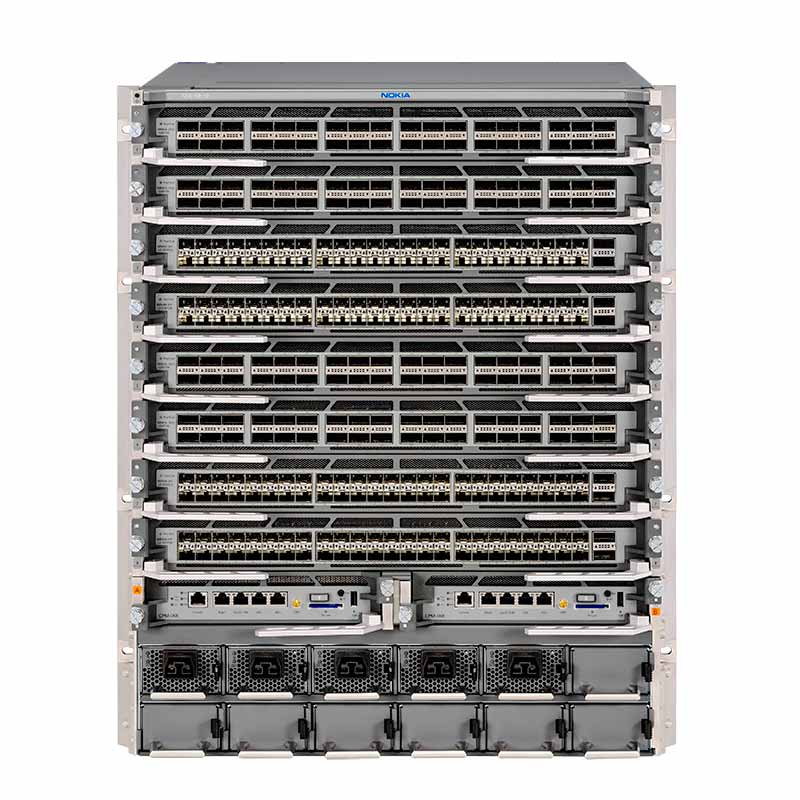Nokia 7250 IXR-10 Interconnect Router addresses evolving demands driven by the cloud, 5G and the Internet of Things.
The Nokia 7250 IXR-R10 Interconnect Router, of the 7250 Series, enables high-scale interconnectivity in data centers and across WANs and aggregation networks in service provider, enterprise and webscale environments.
High-density aggregation
The 7250 IXR is optimized for high-density aggregation, supporting up to 57.6 Tb/s (7250 IXR-10), 28.8 Tb/s (7250 IXR-6) or 1.6 Tb/s (7250 IXR-s) of system capacity, and is equipped with high-performance 100GE (Gigabit Ethernet), 50GE2, 40GE, 25GE, 10GE and GE interfaces to scale networks to meet evolving traffic demands.
Differentiated service support
Per-service, hierarchical queuing features support differentiated QoS, which is ideal for any-G aggregation and fixed-mobile network convergence. These features also help industrial enterprises
attain IT/OT (informational technology/operational technology) convergence by simultaneously carrying both their business and operational traffic.
Additional 7250 IXR-R6 Interconnect Router features and benefits: Please refer to Data Sheet for complete model-specific specifications and additional information.
- System configuration: Dual hot-standby CPMs
- System throughput: Half duplex (HD) IMIX traffic: 57.6 Tb/s
- Card slot throughput: FD per slot: 3.6 Tb/s
- Card slots: 8
- High availability: The 7250 IXR sets the benchmark for high availability. The 7250 IXR-10 and IXR-6 systems support a full suite of 1+1 control, 5+1 fabric, and redundant fan and power configurations
- Automation: The 7250 IXR uses the Nokia SR OS and is managed by the Nokia Network Services Platform (NSP). The Nokia NSP offers a rich set of service management features that automate new service delivery and reduce operating cost
- Software features: The 7250 IXR supports, but is not limited to, the following features:
- Point-to-point Ethernet pseudowires/virtual leased line (VLL)
- Ethernet Virtual Private Network (EVPN)
- Multipoint Ethernet VPN services with VPLS based on Targeted Label Distribution Protocol (T-LDP) and Border Gateway Protocol (BGP)
